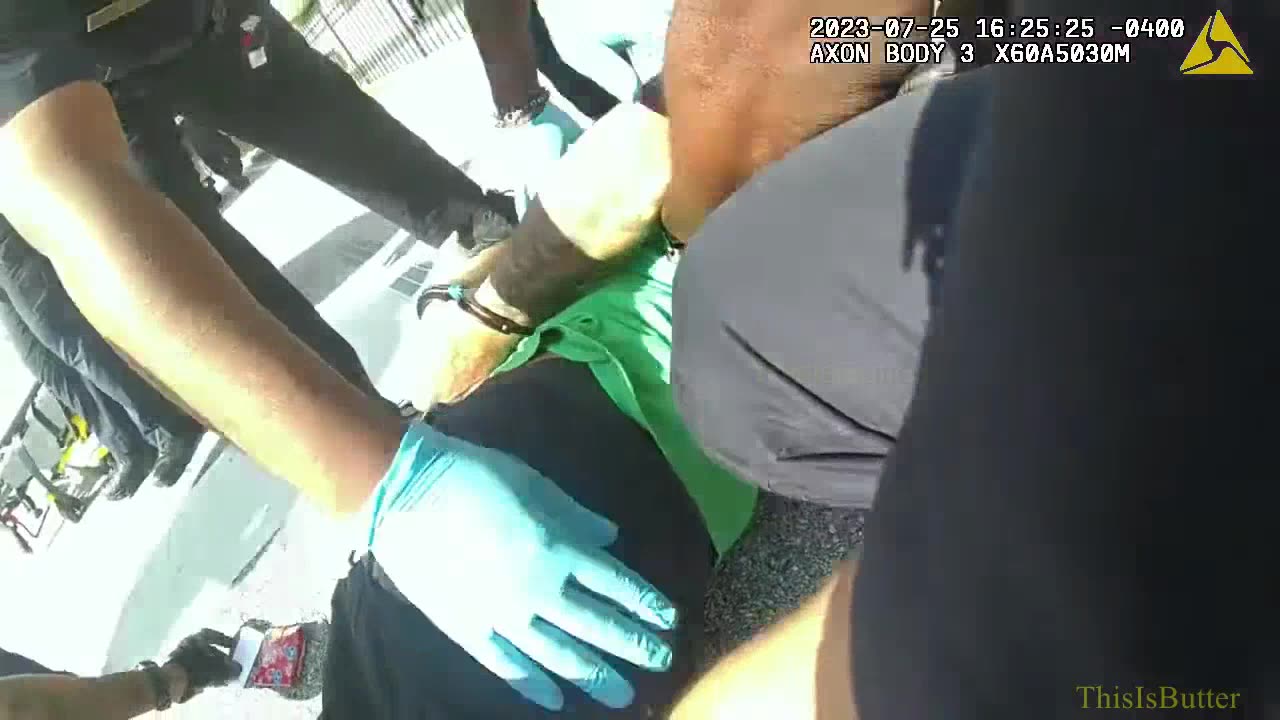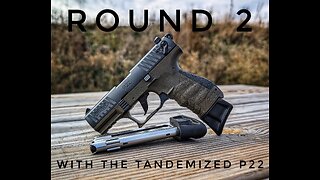Premium Only Content

Bodycam shows Baltimore medic warning against restraining Trea Ellinger facedown before his death
A Baltimore paramedic warned officers on the scene of a July police response that preceded a man’s death in custody not to restrain the 29-year-old in a stretcher with his face down, body camera footage released Tuesday shows.
The footage released by the Maryland Attorney General’s Office does not show what happened inside the ambulance, where investigators say Trea Ellinger, a Glen Burnie resident, became unresponsive before dying at a hospital. The clips from the perspective of two different Baltimore Police officers who responded show Ellinger being placed on a stretcher, first on his side, but ultimately rotating onto his stomach as he was being restrained.
Baltimore Police and the Attorney General’s Independent Investigations Division, which probes deaths in police custody statewide, are investigating the July 25 encounter.
In a news release last month, the IID said police and paramedics responded to the 200 block of South Howard Street, next to the Baltimore Convention Center, after a 911 caller reported a man was “lying in the middle of the street trying to kill himself and ‘fighting people.’” MTA Police and Baltimore Police officers placed the man, identified later as Ellinger, in handcuffs and onto the stretcher on his side.
The officers and Baltimore Fire Department medics restrained him onto the stretcher, and he was in a prone position while being loaded into the ambulance, the IID said. While intended to help patients in respiratory distress, the practice of restraining people facedown is banned by some agencies, including BPD, as it can lead to breathing difficulties and cardiac arrest. The Office of the Chief Medical Examiner has not yet determined the cause and manner of Ellinger’s death, a spokesperson said Tuesday.
The footage released Tuesday shows Baltimore Police officers Sharrod Mobley and Ryan Barnes-Klipa’s response to the scene for around six minutes each. Ellinger is seen in the right turn lane surrounded by MTA Police officers, who are not equipped with body cameras, as the Baltimore Police officers arrive.
The fire department medic, who investigators did not identify, twice cautioned officers on how Ellinger should be positioned, the video shows.
“We just don’t want him facedown,” the paramedic says as officers are holding Ellinger down on his side. He proceeds to insert a syringe into Ellinger’s arm.
“As long as he’s not laying facedown, that’d be great,” the medic says minutes later as officers proceed to lift Ellinger onto a stretcher, where he is placed on his side.
But as the officers and paramedics tighten stretcher restraints on Ellinger for about a minute, he gradually appears to shift toward a prone position. He appears to be laying on his stomach with his head raised as he is loaded onto the ambulance. Investigators said Mobley’s body camera remained activated in the ambulance and captured Ellinger receiving medical treatment, though they did not release that portion publicly “due to protections against the release of medical information under Maryland and federal law.”
-
 12:40
12:40
Chris From The 740
1 day ago $1.60 earnedIs The Walther P22 Still Trash? Let's Find Out
15.7K5 -
 1:00:37
1:00:37
Trumpet Daily
21 hours ago $5.60 earnedThe Cause of ‘Natural’ Disasters - Trumpet Daily | Jan. 10, 2025
17.7K13 -
 33:41
33:41
PMG
12 hours ago $0.75 earnedHannah Faulkner and Haile McAnally | OMAHA YR RACE
7.19K3 -
 21:24
21:24
The Based Mother
1 day ago $1.46 earnedThis is not a drill - California is set on self-destruction.
7.96K9 -
 6:06:49
6:06:49
Sgt Wilky Plays
15 hours agoFirefight Friday
63K6 -
 5:03:49
5:03:49
Drew Hernandez
18 hours agoLA MAYOR PUSHED $49 MILL LAFD BUDGET CUT ONE WEEK BEFORE FIRES?
119K76 -
 2:52:04
2:52:04
Nobodies Gaming
13 hours ago $6.68 earnedNobodies Rumble Gaming TEST STREAM 2.0
73.6K3 -
 1:00:36
1:00:36
Talk Nerdy 2 Us
12 hours agoDigital Surveillance, TikTok Shutdowns & The Hackers They Don’t Want You to Know About!
59.7K6 -
 3:08:37
3:08:37
SpartakusLIVE
15 hours agoDelta Force || Tactical, Strategic, HARDCORE
62.7K2 -
 3:32:05
3:32:05
I_Came_With_Fire_Podcast
19 hours agoTRUMP GUILTY Verdict, LA Fires, New American EXPANSIONISM, and Cyber Truck Updates!!
38.1K19